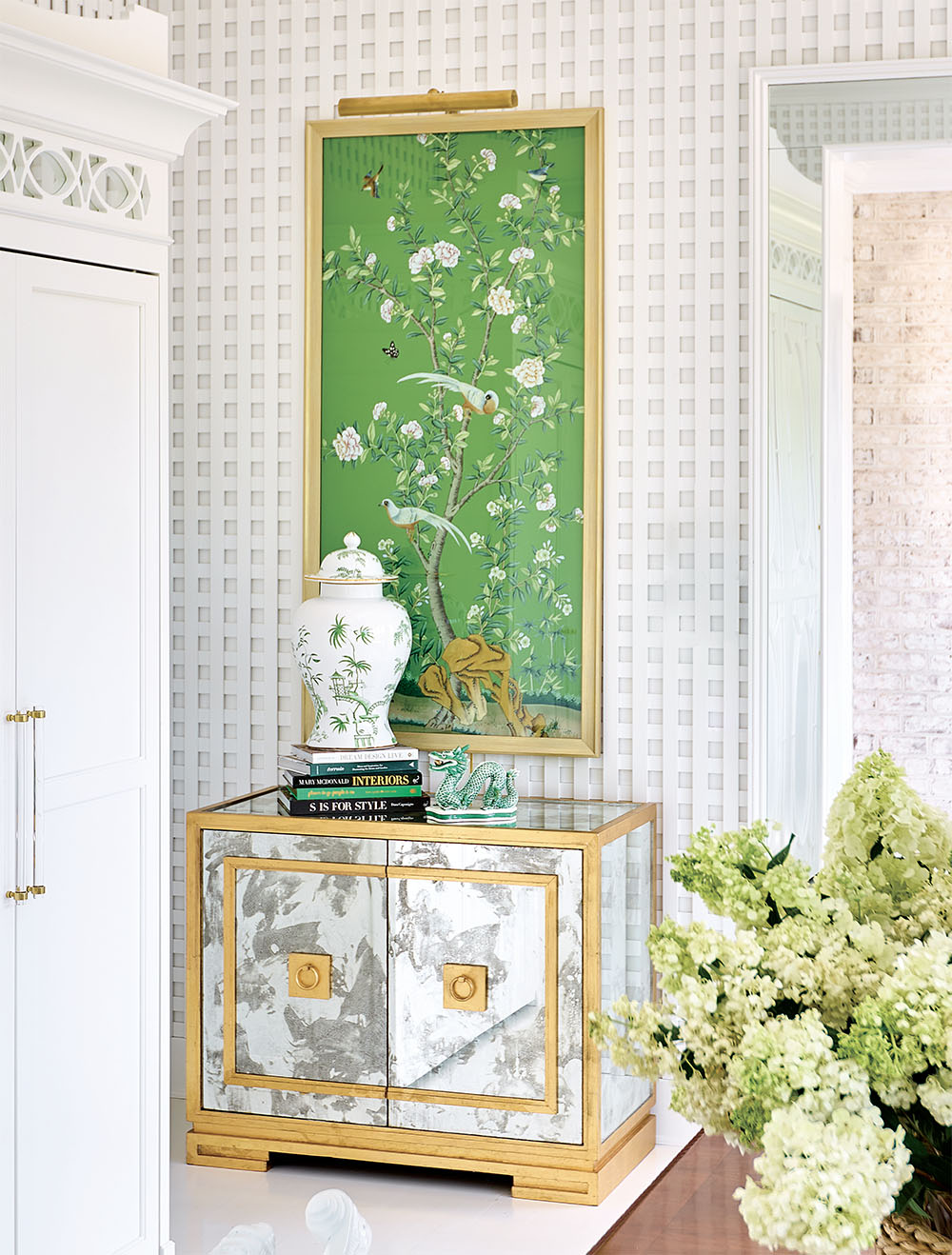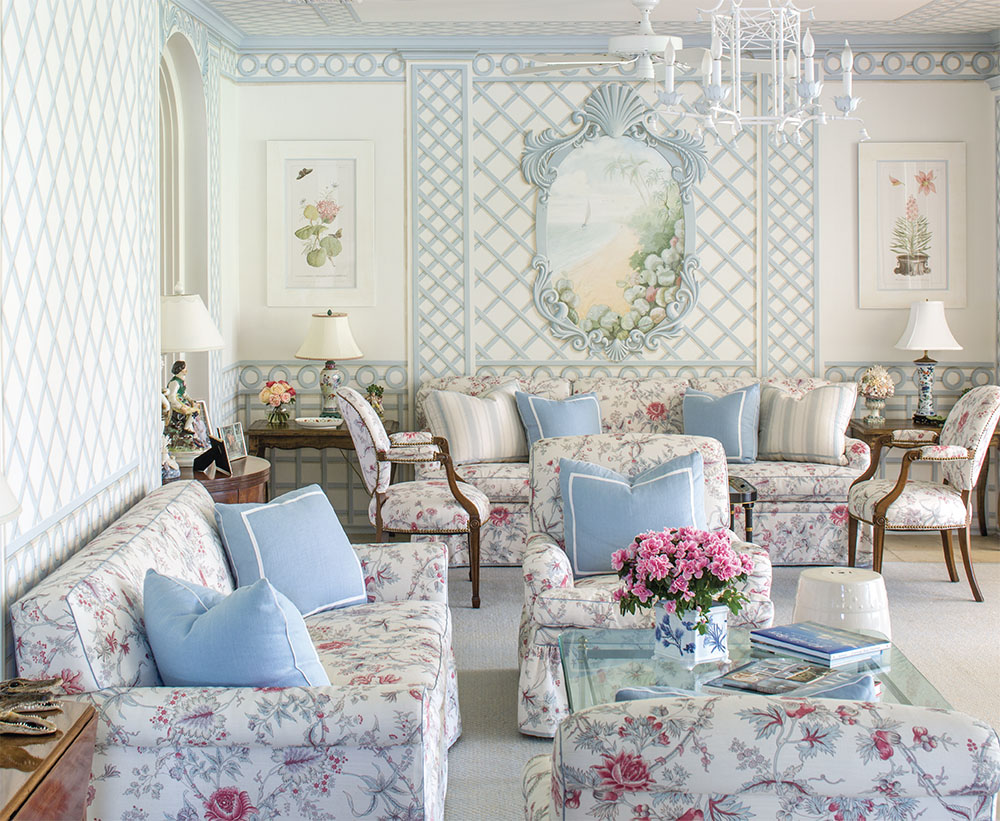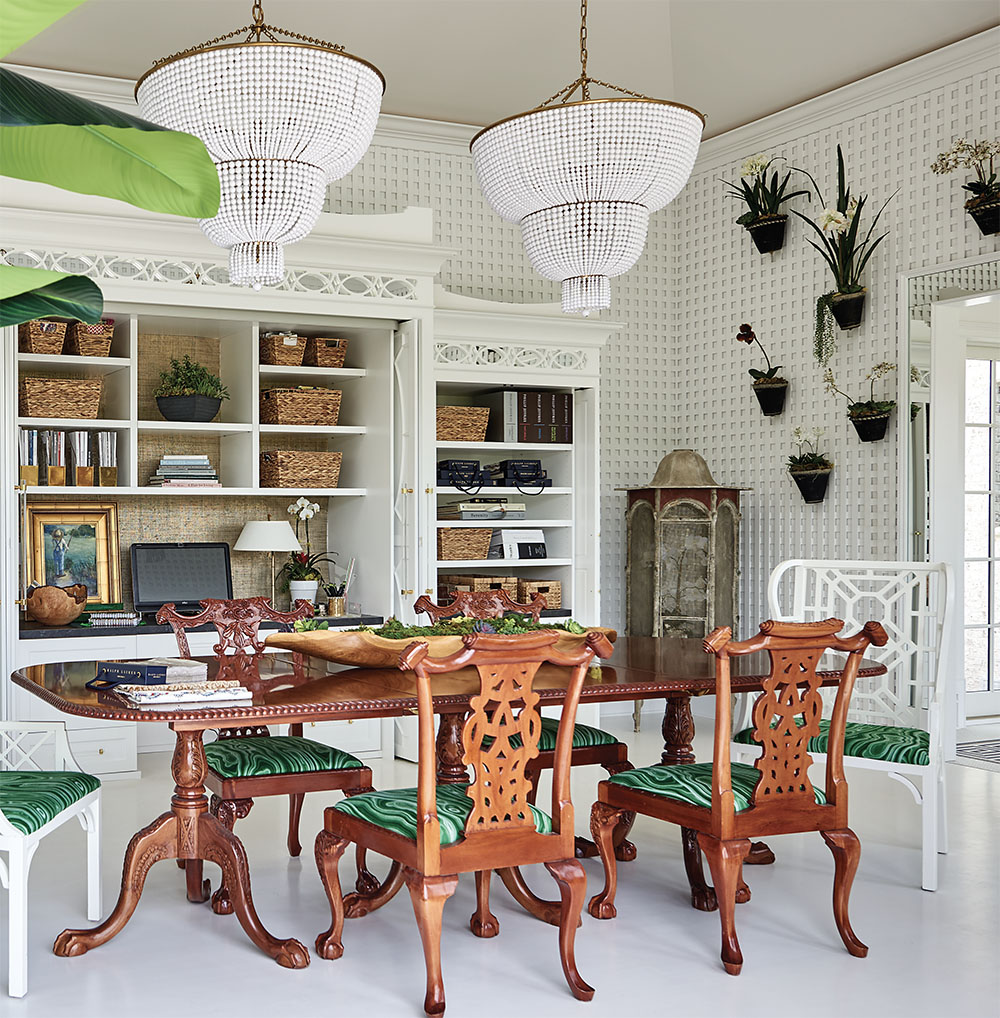Text: Jennifer Boles
Trellises have been fixtures in well-appointed gardens since ancient times. Conceived as an upright support for climbing vines, whose tendrils could weave up and through the lattice design, wooden trelliswork is believed to have first been employed by Egyptian gardeners. In turn, adopted throughout the Far and Middle East, trellises were also used in ancient Rome, even earning an appearance in one of Pompeii’s surviving wall frescoes. Centuries later, trellises figured prominently in medieval European gardens, which were notable for their semi-enclosed spaces. Entwined with roses, ivy, or jasmine, trellises served as flowering walls or covered walkways, creating intimate outdoor rooms for its occupants.
Trelliswork attained dazzling sophistication in seventeenth-century France, where it was referred to by an equally splendid name: treillage. No longer limited to playing a supporting role for vines, treillage became part of a garden’s architecture, used to define spaces, create enticing focal points, and enhance a garden’s overall decorative appearance. Sometimes used in freestanding fashion to form colonnades, elaborate columns, and even temple-like follies, treillage was also frequently applied to surfaces, where it could be used to create a trompe l’oeil-like effect of false perspective. It was André Le Nôtre, the visionary behind Versailles’ extraordinary gardens, who proved to be particularly inventive when working with treillage. For Le Bosquet de l’Encelade at Versailles, Le Nôtre used treillage to surround a dramatic waterspewing fountain, designing trellis walkways, arches, and gazebos that were as magnificent as the fountain itself.
 Subsequently remaining a popular form of garden ornamentation in France, and to a lesser extent in England, trelliswork also found favor in America, particularly among Francophiles such as Thomas Jefferson, who preferred the use of treillage in kitchen gardens. But it was decorator Elsie de Wolfe, a lover of all things French, who is credited with introducing trelliswork to an entirely new realm: interior spaces. Tasked with decorating the Colony Club, a women’s club in New York City in the early 1900s, de Wolfe famously covered the walls—the ceiling and moldings, too—of its indoor lounge with green-painted trellis, earning the space its name, the Trellis Room, and launching a new decorative fashion. Since then, trelliswork has become a much-loved adornment form both outdoor and interior spaces, whether it be authentically made of wood or simply a wallpaper imitation. Perhaps de Wolfe herself best described the transformative appeal of treillage: “Here, indeed, is a delightful medium for your fancy!”
Subsequently remaining a popular form of garden ornamentation in France, and to a lesser extent in England, trelliswork also found favor in America, particularly among Francophiles such as Thomas Jefferson, who preferred the use of treillage in kitchen gardens. But it was decorator Elsie de Wolfe, a lover of all things French, who is credited with introducing trelliswork to an entirely new realm: interior spaces. Tasked with decorating the Colony Club, a women’s club in New York City in the early 1900s, de Wolfe famously covered the walls—the ceiling and moldings, too—of its indoor lounge with green-painted trellis, earning the space its name, the Trellis Room, and launching a new decorative fashion. Since then, trelliswork has become a much-loved adornment form both outdoor and interior spaces, whether it be authentically made of wood or simply a wallpaper imitation. Perhaps de Wolfe herself best described the transformative appeal of treillage: “Here, indeed, is a delightful medium for your fancy!”
 Need to Know
Need to Know
• Because trelliswork historically was made of wood, few wooden antique examples have survived owing to the ravages of time and climate. Nineteenth and early-twentieth-century trelliswork pieces, particularly gates and obelisks, were sometimes made of iron, many of which have survived. Most treillage being used today is of new or recently built construction.
• Trelliswork typically consists of lattice panels that can be customized with geometric borders, arches, or even flat urns. “To me the most classic form of treillage is the combination of diamonds, squares, and circles,” says Atlanta designer Will Huff of Huff-Dewberry, Inc. Huff, who has experience designing with treillage in interior spaces, prefers to use it in rooms that get plenty of sunlight. “Having lots of light is key to seeing through the trellis to the wall behind it. If you can’t see through to the walls, you run the risk of the trellis making the room feel confined.”
• When choosing which color to paint trelliswork, Huff advises consulting nature, even when using it indoors. “Using treillage evokes a sense of being outside, and I feel that a subtle combination of blues, green, and creams is more in keeping with that than other jarring color combinations,” Huff says.










